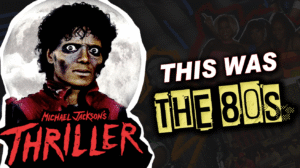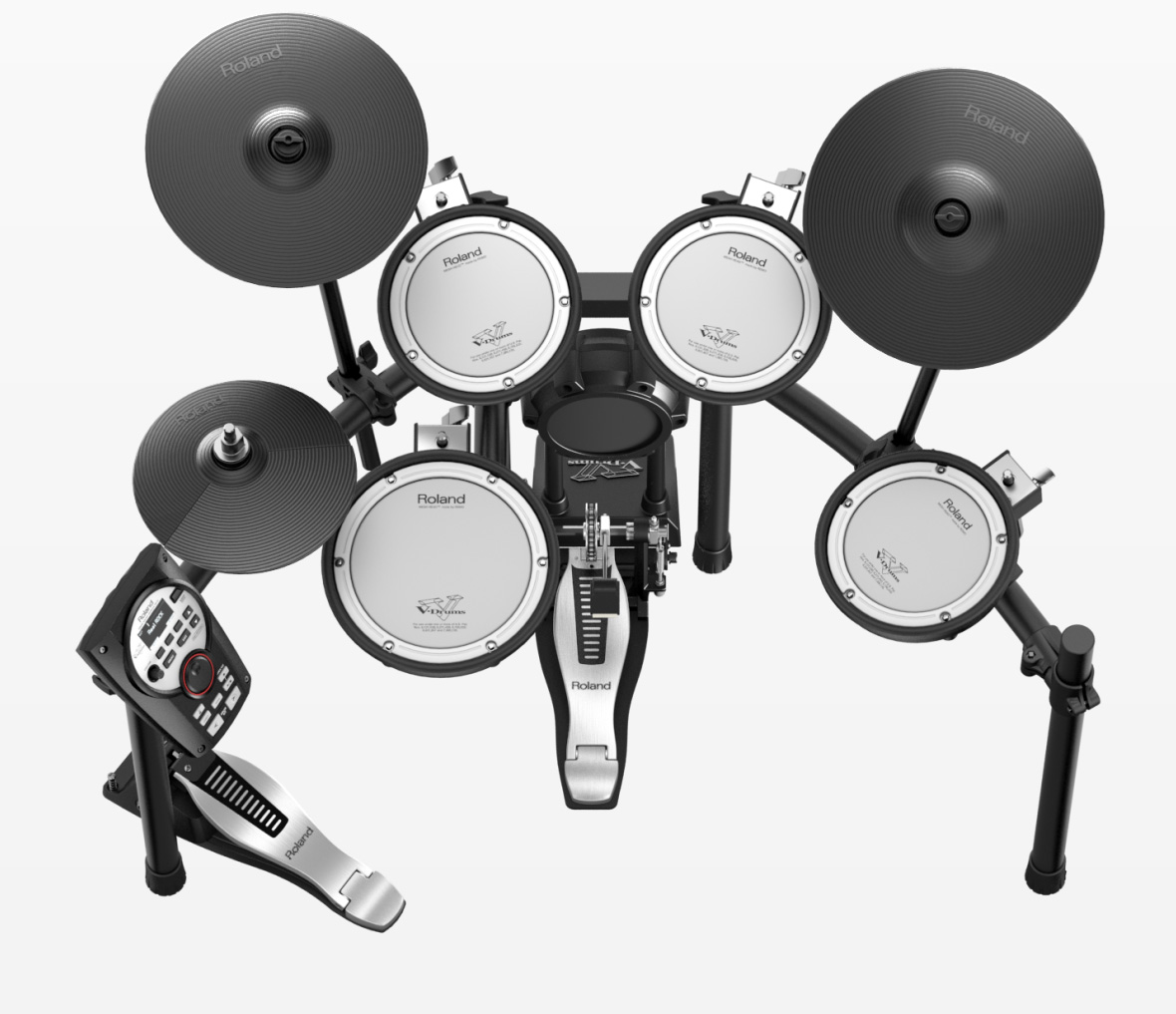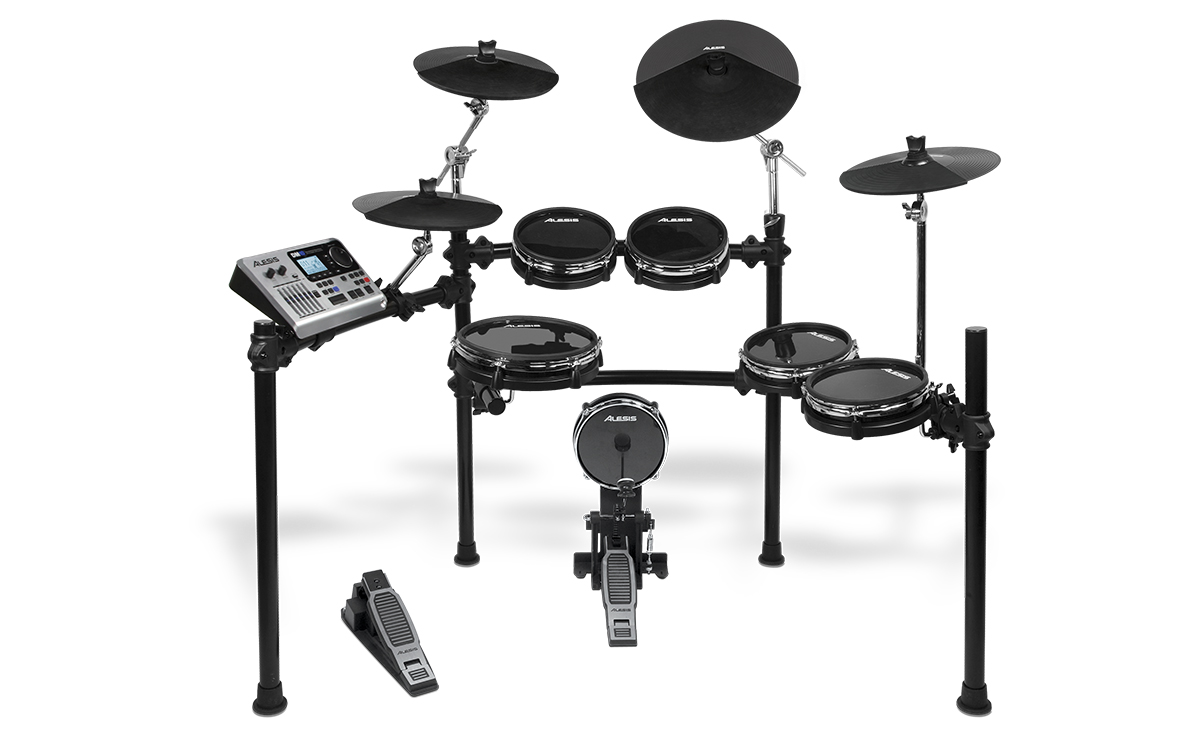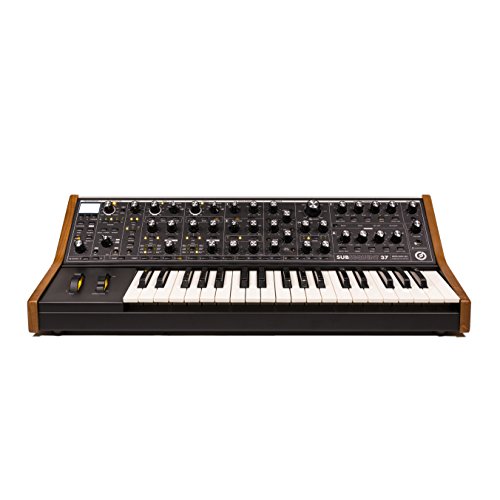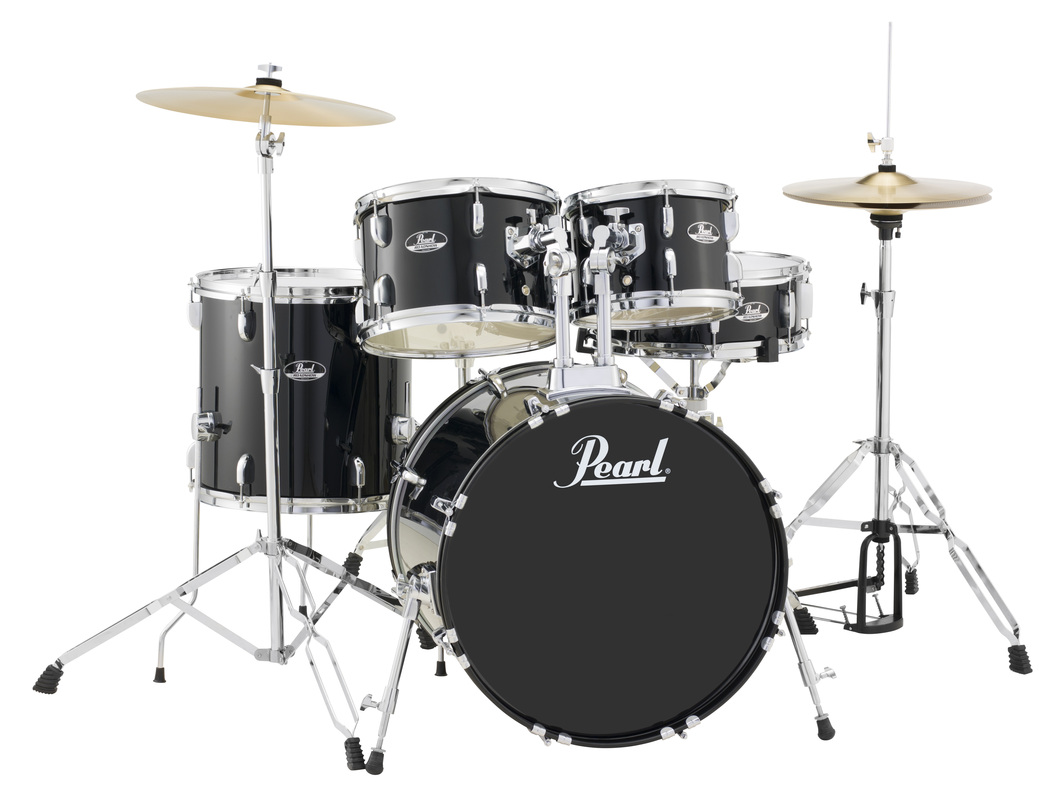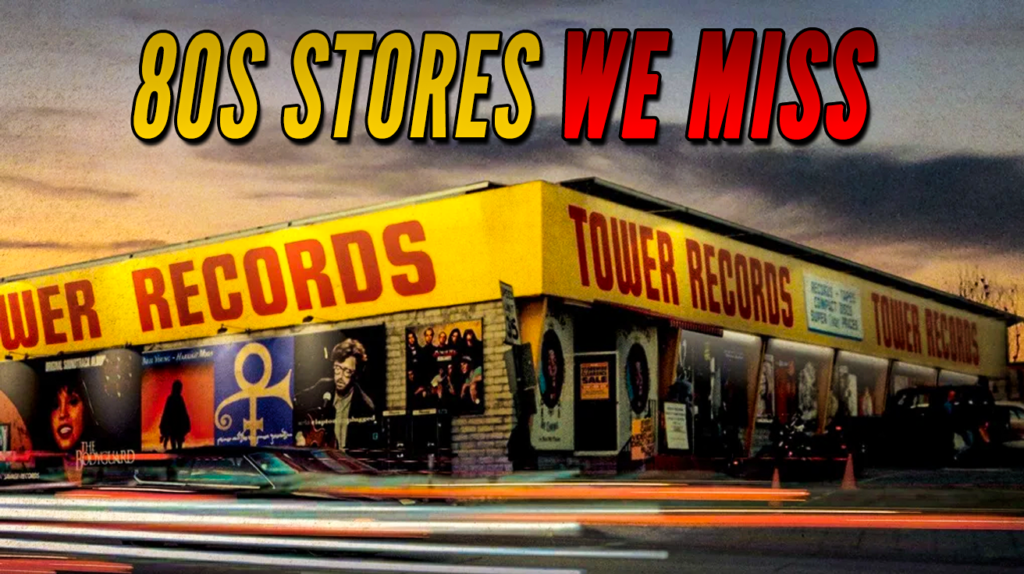
Retail chains defined American shopping in the 1980s. Tower Records, Sam Goody, and Camelot Music dominated music sales from coast to coast, while Radio Shack and Circuit City introduced shoppers to personal computers and home electronics. These stores filled American malls and shopping centers, creating gathering spots where people shopped, learned about new products, and spent time with friends.
The story of these retailers reveals how drastically shopping has changed since then. Most of these once-successful chains couldn’t survive the shift to digital sales and online shopping. Companies that served millions of customers – from Borders Books to Blockbuster Video – closed their doors as consumer habits changed. Their rise and fall shows us how American retail transformed from a mall-based culture to today’s digital marketplace.
20. Tower Records
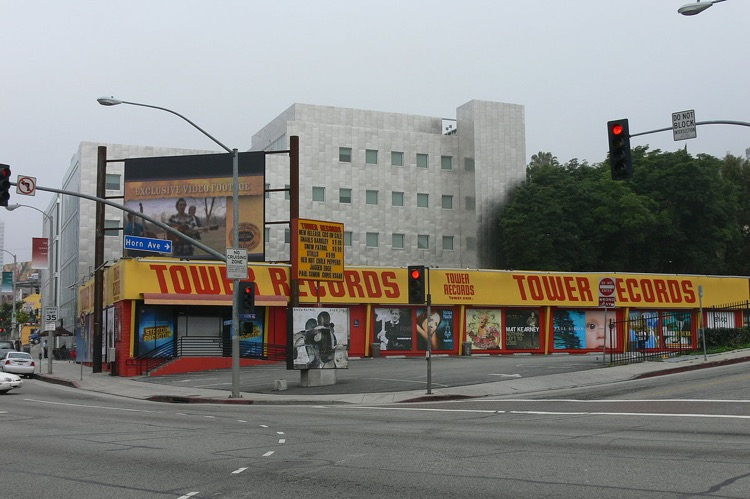
Tower Records revolutionized the music retail landscape after its founding in 1960, creating an unprecedented shopping experience that transcended simple commerce. The company’s massive stores became cultural institutions, offering an extensive selection of records, CDs, and tapes that drew music enthusiasts from all walks of life. Tower Records’ expansion into international markets, including Japan and the UK, demonstrated its global appeal and cultural significance.
However, the digital revolution proved insurmountable for Tower Records’ traditional retail model. The rise of digital music distribution and widespread piracy severely impacted the company’s business model. In 2006, Tower Records filed for bankruptcy and closed its retail operations, though the brand later found new life as an online retailer. This transformation from physical to digital presence mirrors the broader evolution of music consumption in the modern era.
19. Abraham & Strauss
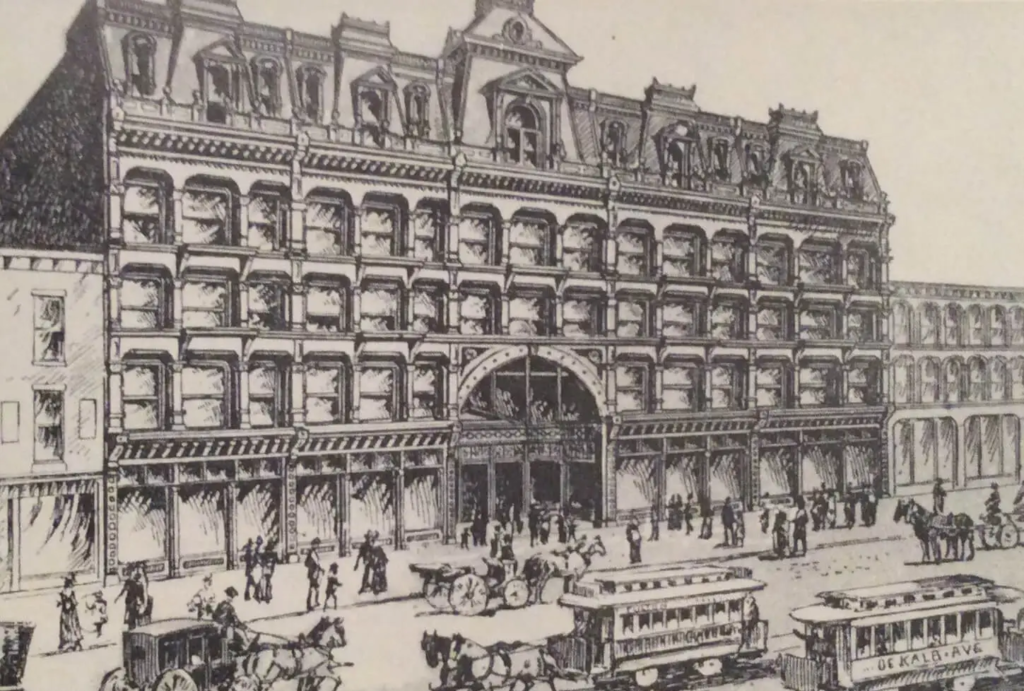
Abraham & Straus emerged in 1865 as Wechsler & Abraham, establishing itself as a revolutionary force in Brooklyn retail. Founded by Abraham Abraham and Joseph Wechsler with an initial investment of $5,000 each, the store grew from a modest dry goods shop into an iconic department store that would transform downtown Brooklyn’s retail landscape. The flagship location on Fulton Street became a marvel of luxury shopping, featuring white-gloved elevator attendants, a fur salon, art gallery, and an innovative money transport system that whisked shoppers’ payments to a central vault.
The store’s golden age saw remarkable innovation and growth, employing nearly 6,000 workers across 28 acres of retail space. However, changing retail patterns and corporate consolidation led to its eventual absorption into the Macy’s brand. In 1994, after Federated Department Stores acquired Macy’s, the A&S name was phased out, with most locations converting to Macy’s stores by 1995. Though the brand disappeared, the flagship Brooklyn location continues as one of the largest Macy’s stores in greater New York, maintaining a legacy of over 130 years of retail history.
18. Peaches Records and Tapes
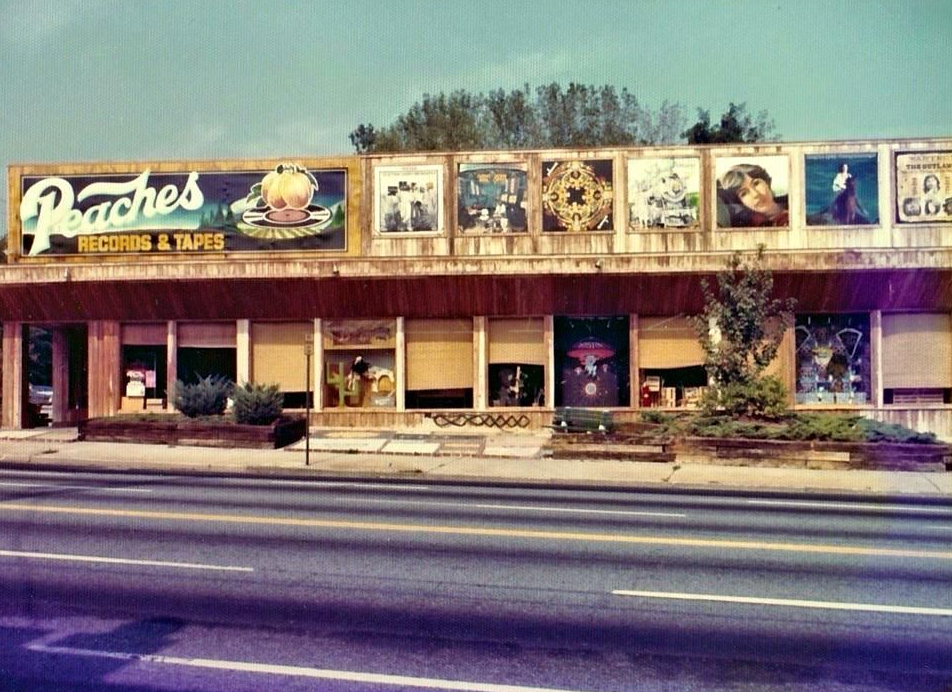
Peaches Records and Tapes emerged in 1975 as a revolutionary force in music retail, creating an unprecedented shopping experience that would define an era. With approximately 50 stores across the United States, Peaches transformed music shopping into a cultural phenomenon, offering an extensive selection of vinyl records and cassettes that drew music enthusiasts from all walks of life. The stores became more than mere retail spaces; they were cultural hubs where music discovery and community connection flourished.
The retail chain’s impact on music culture was profound but ultimately short-lived. As the industry began shifting toward digital formats, Peaches struggled to maintain its position in the rapidly evolving marketplace. By 1981, the company filed for bankruptcy, marking an early casualty of the digital revolution in music retail.
17. Egghead Software
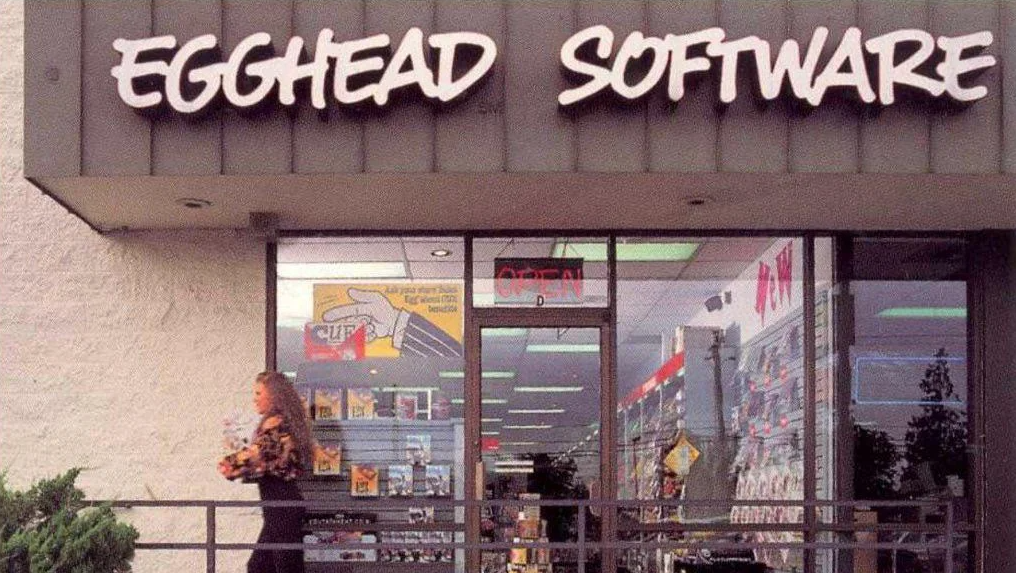
Egghead Software emerged in the 1980s as a pioneering force in specialized software retail, offering an unprecedented selection of computer programs and gaming titles. The company’s stores became destinations for tech enthusiasts and early adopters, providing expert guidance and comprehensive software solutions during the personal computing revolution. Their knowledgeable staff and extensive inventory made them an essential resource for both casual users and professionals.
The rise of internet distribution channels and changing consumer preferences ultimately proved fatal for Egghead’s brick-and-mortar model. Despite attempts to pivot to online sales, the company filed for bankruptcy in 2001.
16. Lionel Kiddie City
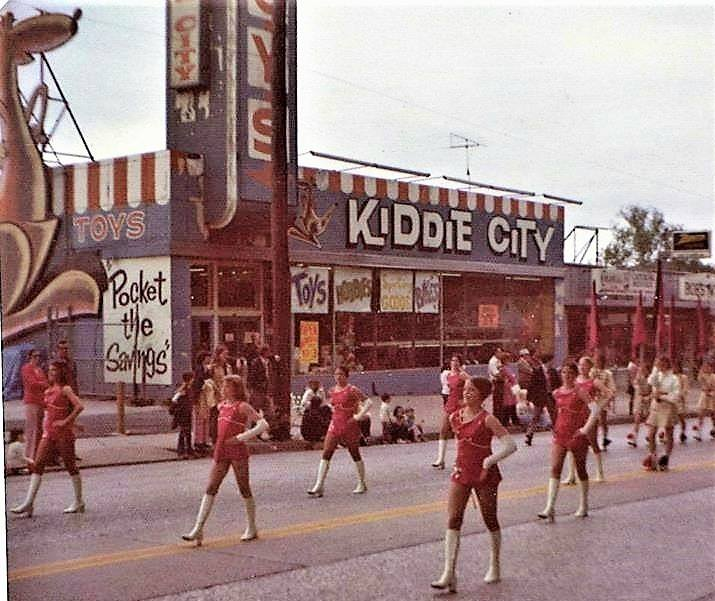
Lionel Kiddie City emerged from the transformation of the Lionel Corporation, famous for its toy trains, into a retail powerhouse. Starting around 1957 in Philadelphia as toy supermarkets, the chain expanded significantly under Lionel’s ownership to become the second-largest toy retailer in America, operating approximately 150 stores under the brands Lionel Kiddie City, Lionel Playworld, and Lionel Toy Warehouse.
The chain’s fortunes followed a tumultuous path through the 1980s and early 1990s. After emerging from a 1982 bankruptcy with 55 stores, it rebounded to 100 locations by 1991, becoming the fourth-largest toy retailer in the country. However, a combination of factors, including fierce competition from Toys “R” Us, expanding discount store toy departments, and an unsuccessful takeover attempt by Robert I. Toussie L.P., led to its final decline. Unable to secure financing for a potential merger with Child World, Lionel Kiddie City announced its complete liquidation on June 2, 1993, marking the end of this once-prominent toy retail chain.
15. Hollywood Video
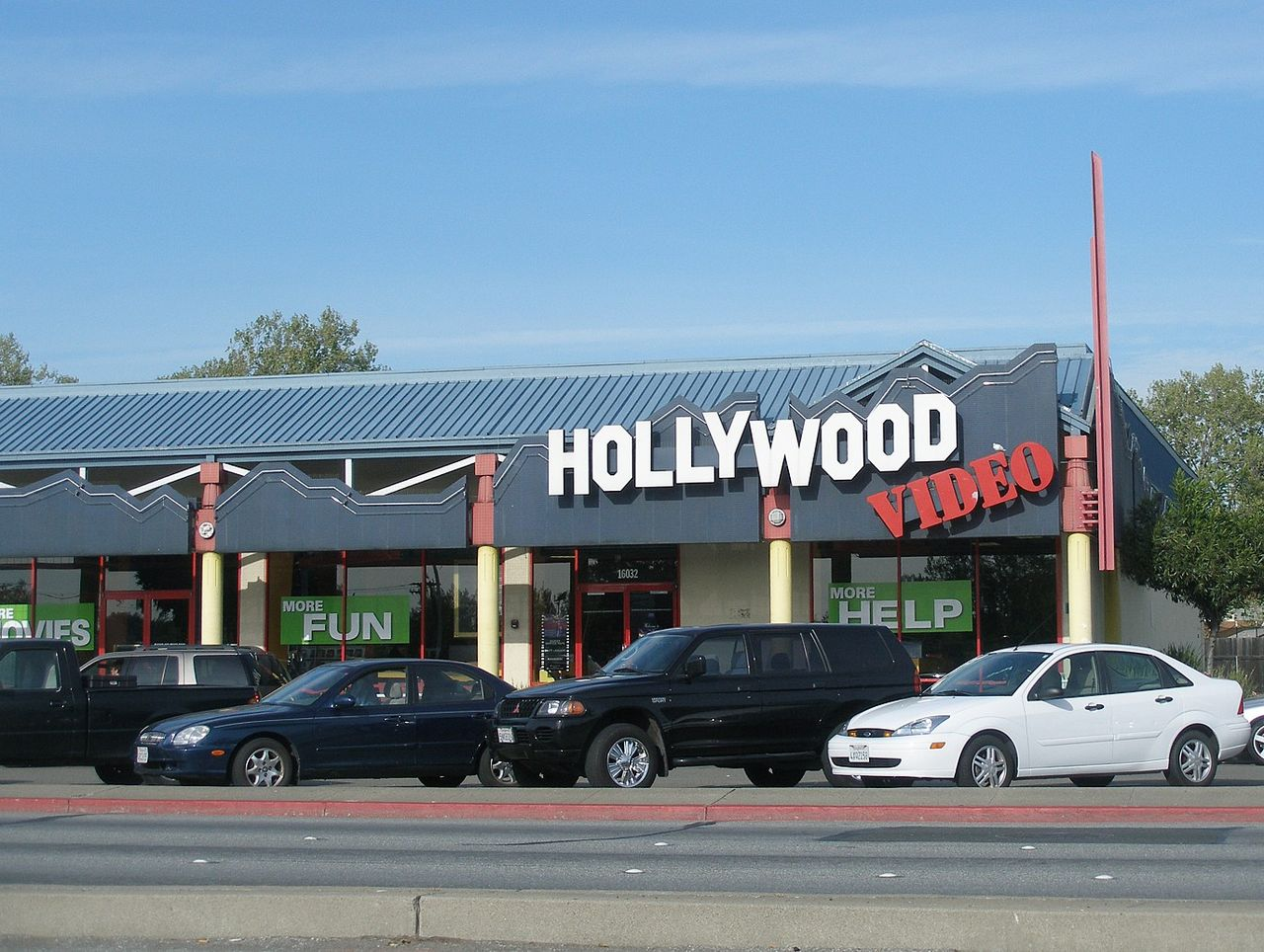
Hollywood Video emerged in 1988 as a formidable competitor in the home entertainment landscape, strategically positioning itself against industry giant Blockbuster Video. The company’s business model centered around expansive retail locations, with stores typically spanning 7,500 square feet and housing an impressive inventory of approximately 16,000 videotapes. This substantial footprint allowed Hollywood Video to create an immersive browsing experience that became deeply embedded in American entertainment culture of the late 20th century.
However, the advent of streaming technology, particularly Netflix’s disruptive business model, fundamentally altered consumer behavior patterns. The elimination of late fees and the convenience of home-based content selection proved to be insurmountable challenges for Hollywood Video’s traditional retail model, leading to its bankruptcy in 2010.
14. Tape World
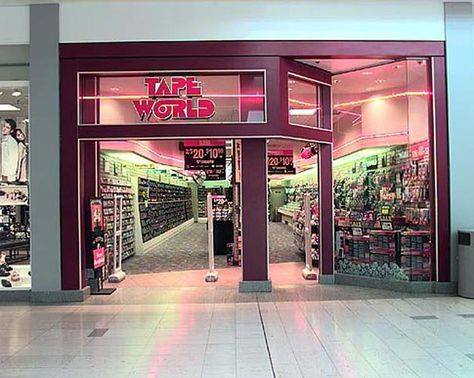
Tape World emerged in 1979 as a specialty mall store chain created by Trans World Entertainment, focusing exclusively on selling prerecorded music tapes. The concept was strategically designed around the compact size of cassettes, which allowed stores to stock more titles in smaller, less expensive retail spaces compared to traditional record stores. The chain expanded rapidly throughout the early 1980s as part of Trans World’s aggressive growth strategy, primarily clustering along the East Coast before spreading throughout the United States.
However, Tape World’s narrow focus on cassettes would ultimately prove to be its limitation. As the compact disc began to dominate the music market in the late 1980s and early 1990s, the chain’s specialized format became a liability. Trans World eventually absorbed Tape World into its broader music retail operations, converting locations to other store brands or closing them entirely as part of the company’s consolidation of its various music retail chains.
13. Babbage’s
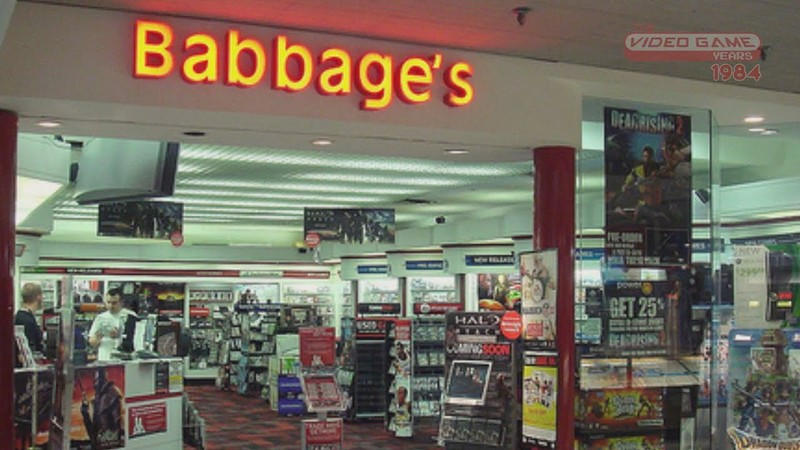
Babbage’s burst onto the retail scene in 1987, quickly establishing itself as a premier destination for software enthusiasts and early gamers. The company’s initial focus on personal computer software positioned it at the forefront of the emerging digital revolution, offering customers access to the latest programs and gaming titles. Their stores became gathering places for tech-savvy consumers, creating a unique retail environment that bridged the gap between traditional shopping and the digital future.
The company’s most significant transformation came in 1999 when it rebranded as GameStop, marking a pivotal shift in its business strategy. This evolution reflected the changing landscape of gaming retail, as the industry moved away from computer software toward console gaming. While the Babbage’s name faded into retail history, its legacy lived on through GameStop’s continued presence in the gaming industry, though facing its own set of challenges in an increasingly digital marketplace.
12. National Record Mart
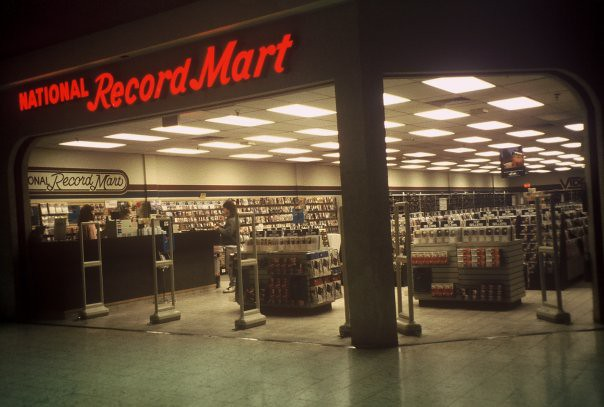
Mart Pittsburgh’s National Record Mart showed other retailers how to sell music in America’s rust belt. NRM stores mixed mainstream hits with jazz, classical, and ethnic music that served their local communities’ tastes. The company trained store staff to know music deeply, which helped them grow from a single downtown store into a regional powerhouse. Store managers created eye-catching displays and ran midnight sales events that drew huge crowds. NRM’s success came from understanding what music meant to steel town families looking for entertainment.
11. Venture Stores
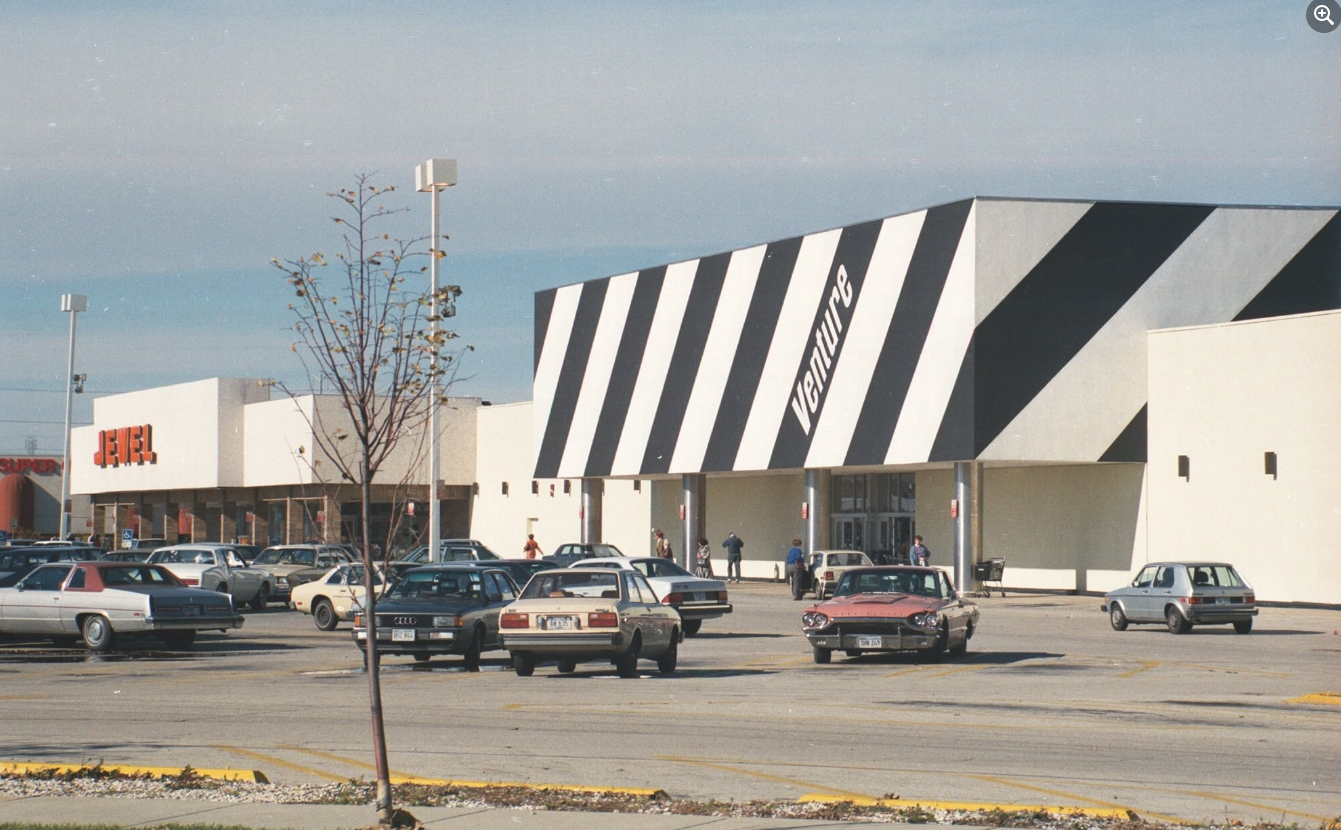
Venture Stores emerged in 1968 as an innovative force in Midwest retail, introducing a unique approach to discount shopping that resonated with budget-conscious consumers. Their signature slogan, “Save with Style,” perfectly encapsulated their business philosophy, offering affordable products without sacrificing quality or aesthetic appeal. By the late 1980s, the chain had expanded to over 70 locations, becoming a familiar presence in Midwest communities and establishing itself as a go-to destination for value-oriented shoppers.
Despite its initial success and strong regional presence, Venture Stores faced mounting challenges as the retail landscape evolved. The company’s transition to private ownership in 1990 marked a critical turning point, but it wasn’t enough to overcome the increasing competition from larger discount retailers. The pressure ultimately proved too great, and by 1998, Venture Stores filed for bankruptcy, closing its doors and marking the end of a distinctive chapter in Midwest retail history.
10. Sharper Image
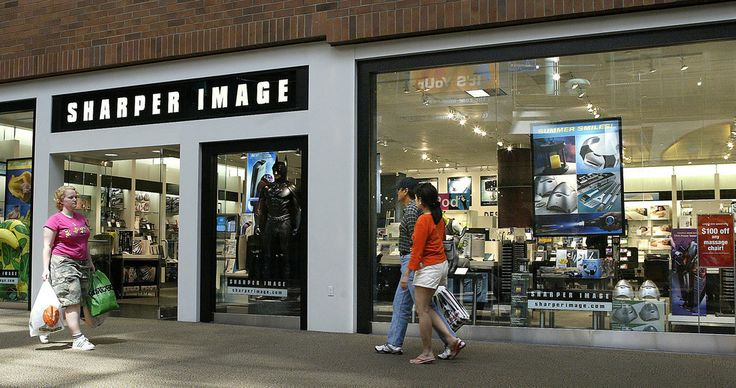
Sharper Image emerged in 1977 as a revolutionary force in specialty retail, introducing American consumers to cutting-edge gadgets and innovative technology products. The company’s showroom-style stores created an interactive shopping experience where customers could test massage chairs, air purifiers, and the latest electronic innovations. Their carefully curated product selection and upscale atmosphere positioned them as the premier destination for luxury gadgets and executive gifts.
The company’s decline came swiftly in the mid-2000s, triggered by controversies surrounding their flagship Ionic Breeze air purifiers and increasing competition from online retailers. Despite attempts to maintain relevance, Sharper Image filed for bankruptcy in 2008. The brand continues as an online and licensing entity, but the days of walking into a Sharper Image are gone.
9. Blockbuster Video
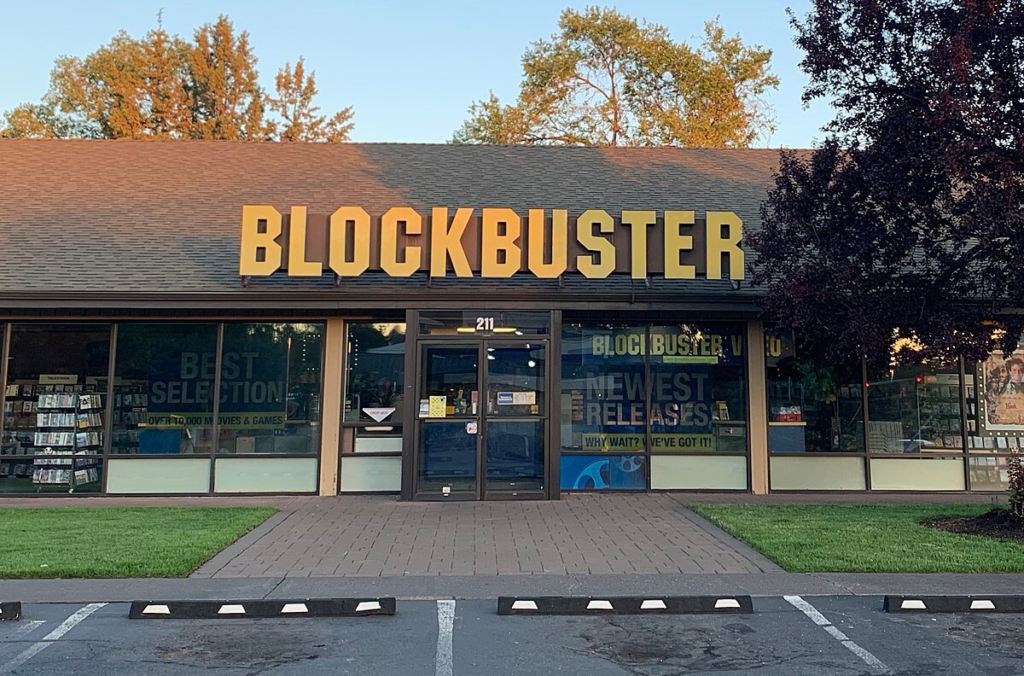
Blockbuster Video emerged as the undisputed leader in the video rental industry, revolutionizing how Americans consumed entertainment in the late 20th century. Founded in 1985, the company experienced meteoric growth, expanding to over 9,000 stores at its peak and becoming a cultural touchstone for millions of families. The iconic blue and yellow signage became synonymous with weekend entertainment, while the company’s vast inventory and presence in nearly every American neighborhood made it a dominant force in home entertainment.
The company’s decline proved as dramatic as its rise. Despite its market dominance, Blockbuster failed to adapt to changing consumer preferences and emerging technologies. Poor leadership decisions, particularly the fateful choice to dismiss Netflix’s partnership offer, combined with the rise of digital streaming services, eroded its once-unassailable market position. By 2010, Blockbuster filed for bankruptcy, and by 2014, nearly every company-owned store had closed their doors. A single Blockbuster – “The Last Blockbuster” – remains in Bend, Oregon.
8. Borders Books
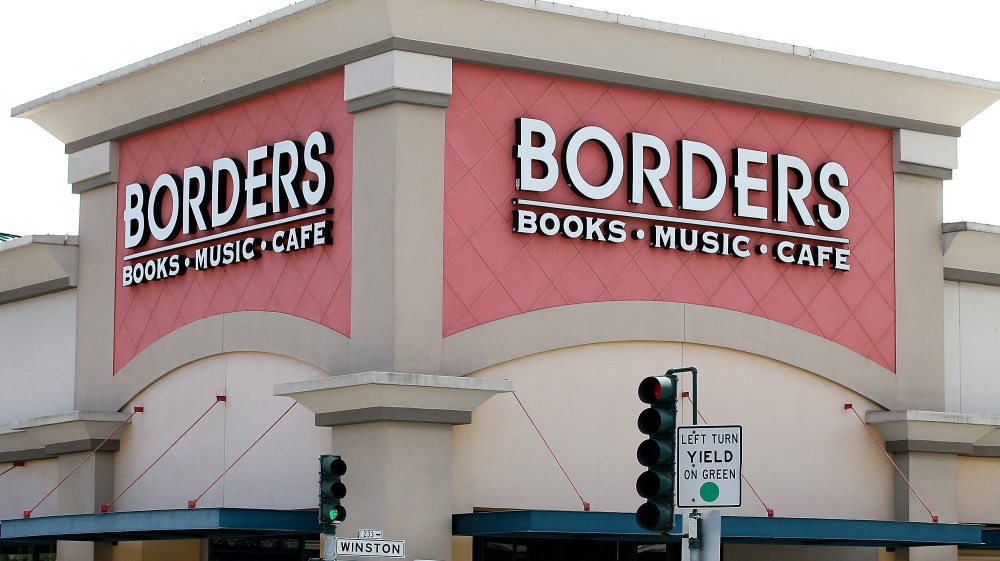
Borders Books created a unique retail environment that transcended traditional bookselling when it opened in 1971. The stores became cultural hubs, offering not just books but a comprehensive media experience with music, magazines, and gifts. The company’s emphasis on creating a welcoming atmosphere with knowledgeable staff and comfortable browsing spaces made it a favorite destination for book lovers.
The digital revolution proved particularly challenging for Borders. The rise of e-books and online retailers fundamentally changed how people consumed and purchased reading material. Despite attempts to adapt, Borders filed for bankruptcy in 2011 and closed its stores.
7. Comp USA
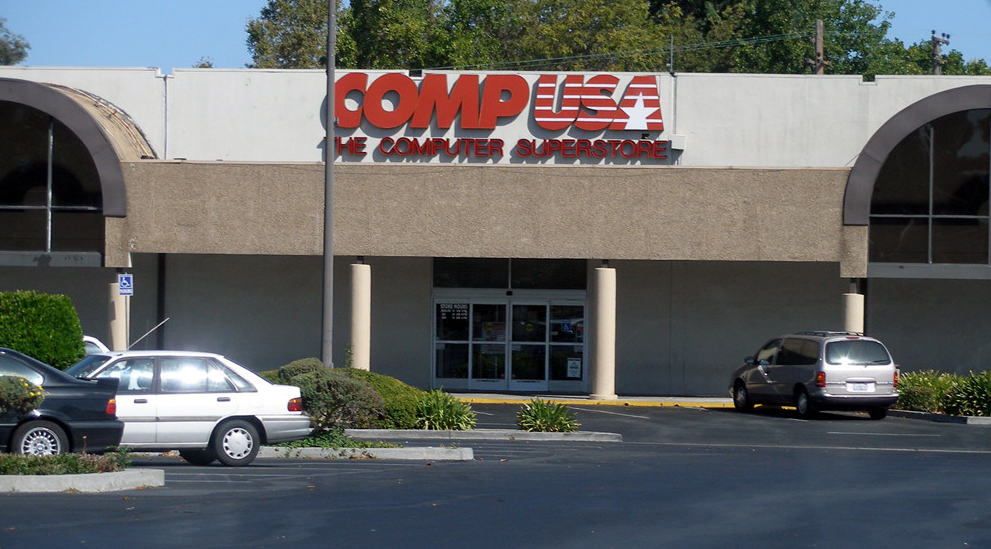
CompUSA carved out a unique niche in the retail landscape, evolving from its origins as Soft Warehouse in 1984 to become a nationwide computer retail powerhouse. At its peak, the chain operated over 200 locations, establishing itself as a crucial link between emerging computer technology and consumers. The stores served as educational hubs where customers could learn about and experience the latest technological innovations.
Despite its strong market position, CompUSA struggled to maintain relevance as the retail landscape evolved. Intense competition from online retailers and changing consumer habits eroded its market share. By 2008, the company closed most of its stores, marking the end of an era in computer retailing.
6. FW Woolworth
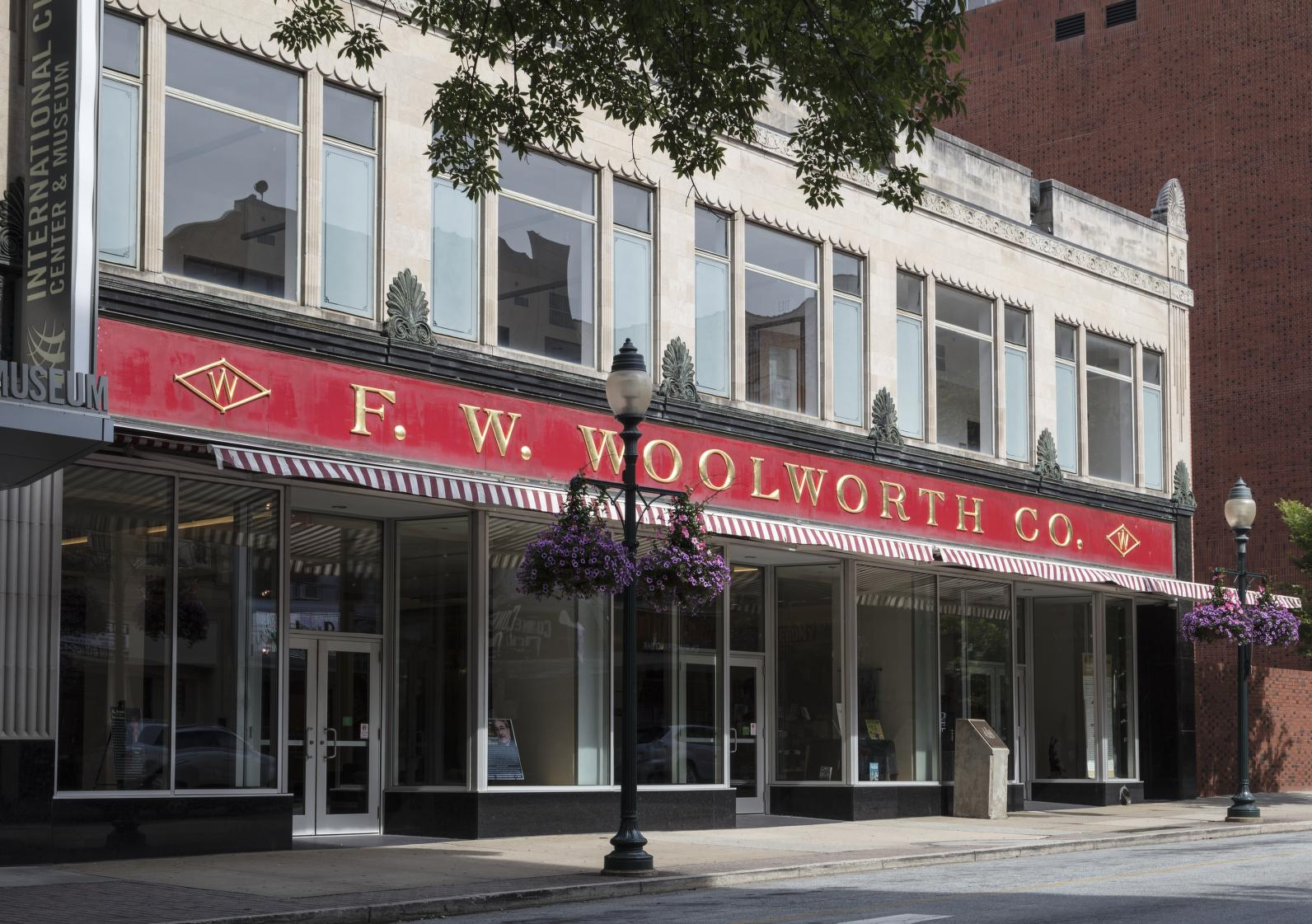
FW Woolworth Company revolutionized American retail when it launched in 1879, pioneering the five-and-dime store concept that would define affordable shopping for generations. The company’s stores became fixtures in communities across the nation, offering everything from household goods to lunch counter service. Their innovative merchandising strategies and commitment to value pricing made them a cornerstone of American retail culture.
The rise of discount department stores and changing consumer preferences gradually eroded Woolworth’s market position. By the late 1980s, the company faced insurmountable challenges from more modern retailers. The closure of Woolworth’s stores marked the end of an era in American retail history, though the company’s legacy lives on through its corporate successor, Foot Locker, which emerged from Woolworth’s sporting goods division.
5. Waldenbooks
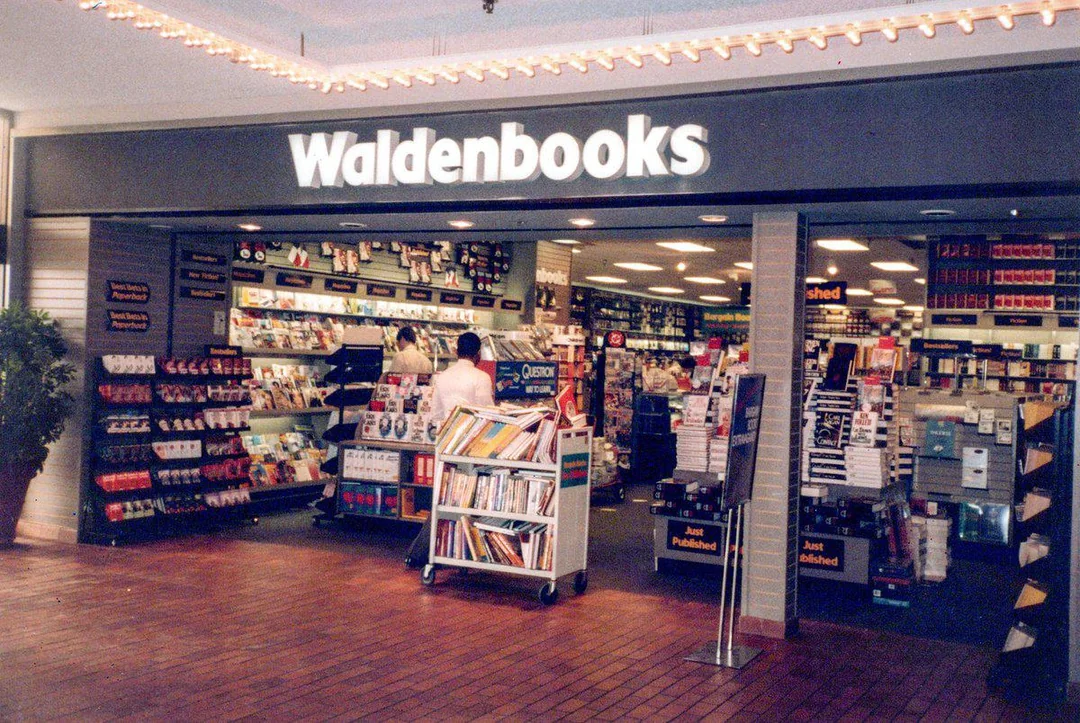
Waldenbooks revolutionized the book retail landscape during the Great Depression, making literature accessible to the masses through its mall-based locations. The chain’s strategic presence in shopping centers across America transformed book buying from a specialty experience into an everyday convenience, with stores designed to attract casual readers and bibliophiles alike. Their carefully curated selection of bestsellers and classics made reading accessible to millions of Americans.
The digital revolution proved insurmountable for Waldenbooks’ traditional retail model. The rise of e-readers and online bookstores fundamentally changed how people discovered and consumed literature. In 2011, the chain succumbed to these pressures and closed its doors forever.
4. Sam Goody
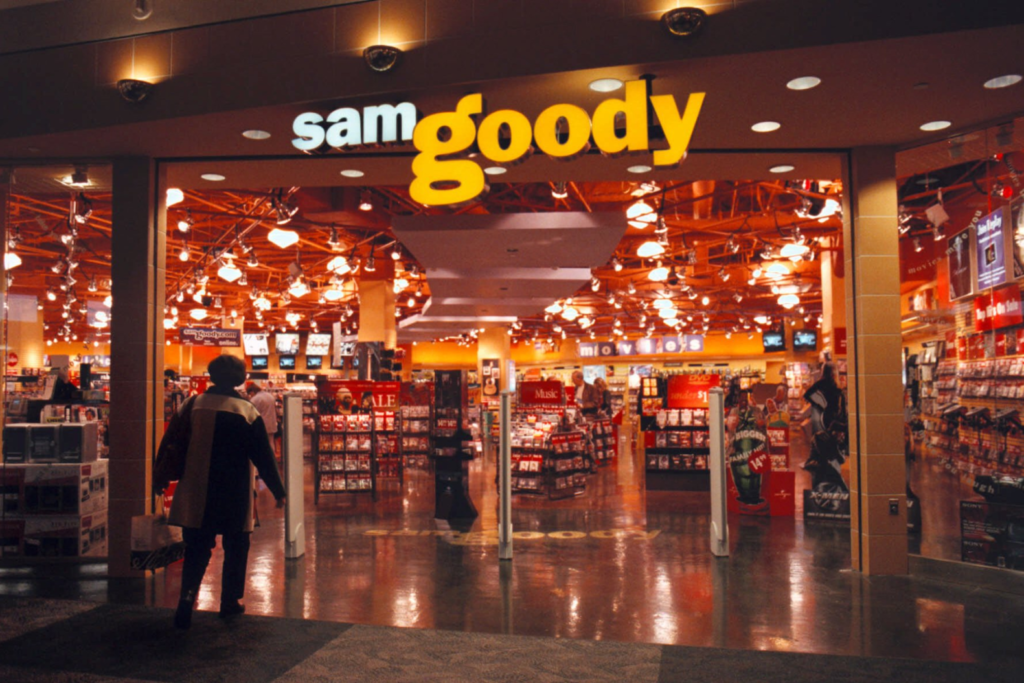
Sam Goody established itself as a cornerstone of American music retail after its founding in the late 1940s. At its peak, the chain operated over 1,300 stores nationwide, creating an unparalleled music shopping experience that catered to every taste and genre. The stores became cultural hubs where music enthusiasts could discover new artists, preview albums, and connect with fellow fans in an environment dedicated to musical exploration.
However, the digital revolution of the early 2000s devastated traditional music retail. As downloading and streaming services gained popularity, Sam Goody’s physical media-based business model became increasingly obsolete. The company filed for bankruptcy in 2006, closing most of its locations.
3. Camelot Music
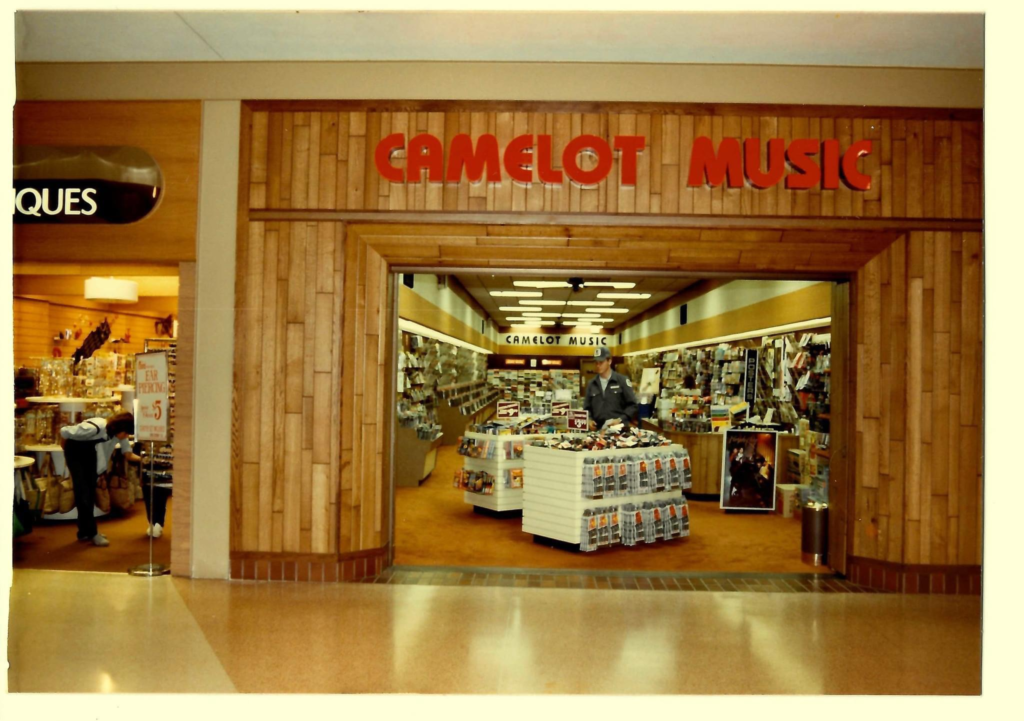
Teenagers flocked to Camelot Music stores in malls across America throughout the 1980s. The chain mastered the art of mall-based music retail by creating welcoming spaces where young people could browse for hours. Store layouts put new releases up front, deep catalog in the middle, and accessories like blank tapes and music magazines near the registers. The formula worked so well that Camelot expanded rapidly into new markets year after year. Parents trusted Camelot’s family-friendly image, which helped the chain thrive in suburban locations.
2. Radio Shack
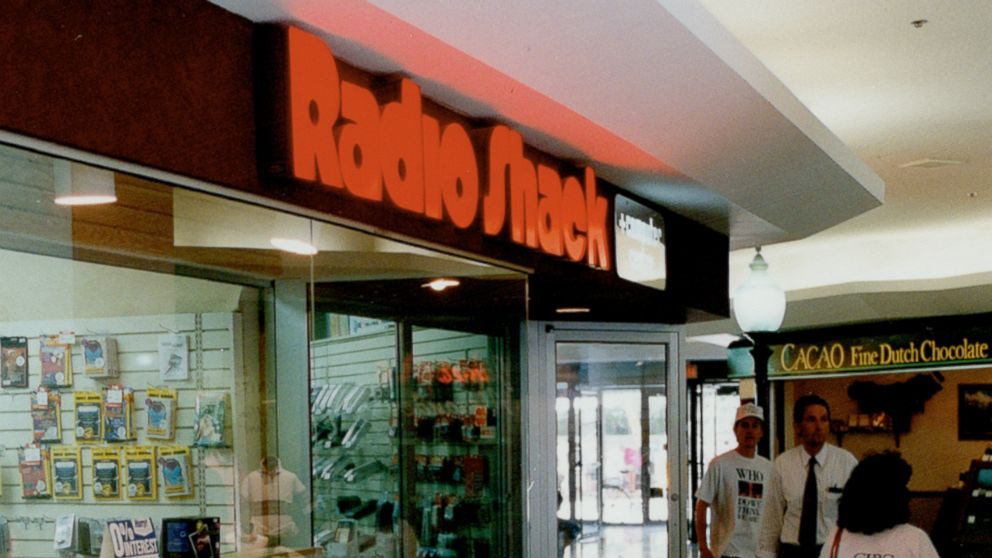
Radio Shack’s journey began in 1921 as a humble mail-order business catering to amateur radio enthusiasts, but it quickly evolved into something much more significant. Over several decades, the company transformed itself into a retail powerhouse, becoming synonymous with consumer electronics and technological innovation. By the late 1990s, Radio Shack had established an impressive presence with over 8,000 stores worldwide, making it a household name for technology enthusiasts and everyday consumers alike.
However, the dawn of the 21st century brought unprecedented challenges that would ultimately prove too difficult to overcome. The rise of online shopping, coupled with significant management issues, began to erode Radio Shack’s market position. Despite various attempts to modernize and adapt to changing consumer preferences, the company struggled to maintain relevance in an increasingly digital marketplace. The once-mighty electronics retailer filed for bankruptcy in 2015, transitioning primarily to an e-commerce platform and leaving behind a legacy of technological accessibility that had defined American retail for nearly a century.
1. Circuit City
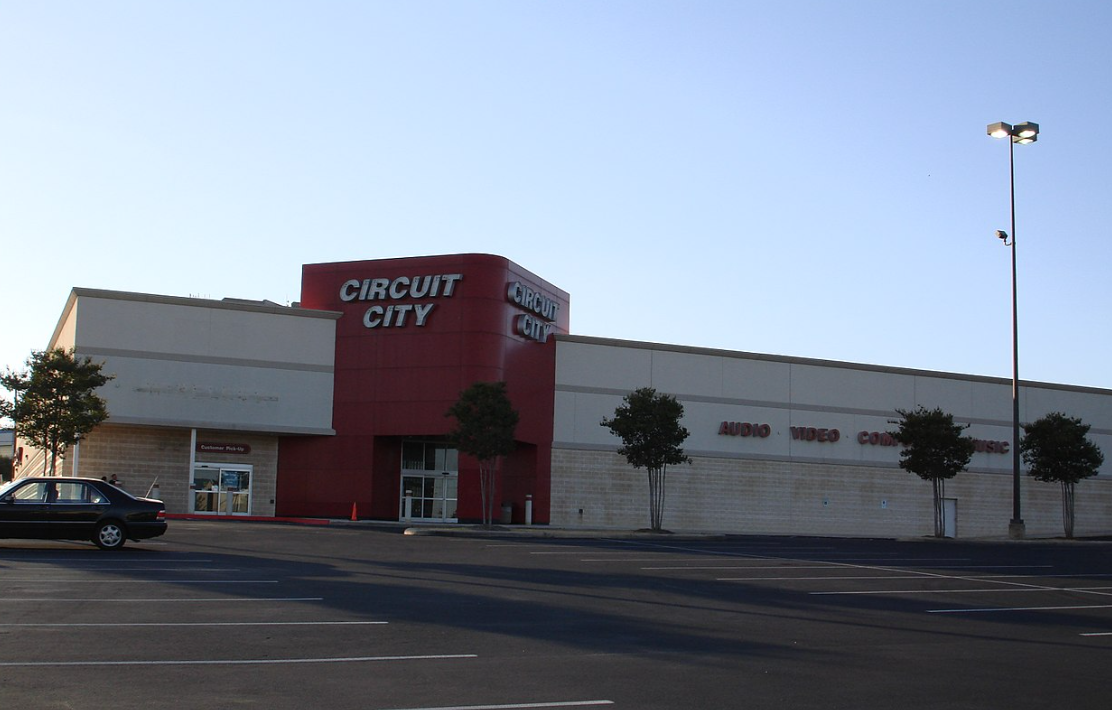
Circuit City established itself as a pioneering force in electronics retail, transforming from a humble television store in 1949 into a technological wonderland for consumers. During the 1980s, the company became the go-to destination for tech enthusiasts, distinguished by its knowledgeable staff and comprehensive product selection. The distinctive red and white color scheme of its stores became a familiar sight in shopping centers across America.
The company’s downfall came as the retail landscape underwent dramatic changes. The rise of online shopping, combined with mounting financial challenges, proved too difficult to overcome. Circuit City filed for bankruptcy in 2009, closing its stores and leaving a significant void in the electronics retail sector.






